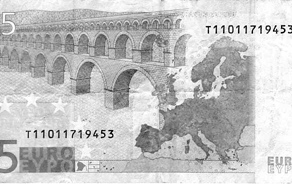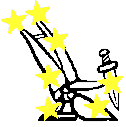
BETWEEN Christmas Day last and New Year’s Day, 2002 I read an engaging article in the February, 1950 edition of An tÉireannach Aontaithe, which was the official Republican journal of that period. This is the same paper which is often quoted by the “50 years ago” contributor to SAOIRSE.The article I read was signed with a nom de plume, AMICUS, and it was about Professor William F. P. Stockley, [1859-1943], who was Professor of English in University College, Cork. AMICUS was apparently a student of his.

|
This Professor Stockley was a staunch Republican. The British Crown Forces attempted to assassinate him on the same night that they shot Tomás Mac Curtáin, Lord Mayor of Cork, on March 20, 1920.
He was a TD in the Second [All-Ireland] Dáil Éireann, representing the National University of Ireland and his was the last vote cast against the Treaty in January, 1922, as the voting was done in alphabetical order. He remained true to the 32-County Republic and he was one of the seven faithful TDs who delegated their powers of government to the Army Council of the IRA on December 8, 1938.
What kind of a man was he otherwise? Thanks to AMICUS I learned that — “He was much given to music, but he wanted no saccharine-lusciousness. Bach he enjoyed and Beethoven, and Mozart and Haydn, and some Liszt and a little Chopin and Wagner [when he wasn’t too intense] and Schubert and Hugo Wolf. But the old liturgical masters, Palestrina, Allegri, Vittoria, Orlando di Lasso, etc, love of these made him travel long distances from his home to the Cathedral.
“He was a widely cultured man, with the mellow ripeness of many countries and many languages. He was vehement almost to incoherence in asserting the importance of the Irish language for Ireland, the necessity there was for it to mould normally and naturally the Irish mind. ‘A language has its own peculiar atmosphere, and surely the atmosphere of Ireland should be Irish’. He loved Irish traditional songs and tunes and in the soirées held so often in his home he continued to have many a good Irish traditional item.
“He abhorred things shoddy—shoddy pictures, shoddy statues, shoddy stained glass —‘execrable’— shoddy buildings, shoddy music, shoddy thinking, shoddy reasoning, shoddy writing, shoddy politics. His one criterion and canon of criticism was the truth, and God help the individual who consciously offended against truth.”
    |
Another contributor to SAOIRSE, Deasún Breatnach, wrote in his article last month about Ceapadh sa dol, being caught in the snare or trap of the new imperialism, as we lose more and more of our sovereignty and identity.
When Aer Lingus was reported to be in danger of collapse last September we wertold that EU rules would not allow the Dublin administration to invest in it to save it. Bertie Ahern and his ministers replied with sham indignation [galamaisíocht, sa Ghaeilge, is dócha]. On RTÉ’s Prime Time Mary O’Rourke, 26-County Minister for Public Enterprise, declared that “we must have a national airline”. A UCD Professor asked her: “Why is it important to have a national airline when we no longer have a national currency?”
At this point Ms O’Rourke was, remarkably, struck dumb, something unusual for her.
As regards the Euro notes, I shall declare my own indignant critique. I consider them to be bland, boring and uninspiring, lacking all warmth and humanity. After two millennia of European art, philosophy and science we now have currency notes foisted upon us without one human visage or face, truly the faceless designs of a faceless bureaucracy.
The designer, an Austrian called Robert Kalina, an employee of the Austria Central Bank, claims to have produced a “consensual” design. He worked to a typical E.U. specification which ran to 30 pages of text and stipulated that all possible traces of national identity should be suppressed. He came up with abstract architectural images of doors, windows and bridges and, no doubt, the mandarins of Brussels and Frankfurt feel proud of what they have done—obliterated 2000 years of art and culture. They are doing this in order to tighten their grip, over-riding and stamping out local and national identities in the process.
It is unthinkable that the same Europe which produced a Michelangelo, or for that matter a Robert Ballagh, will not react to all of this. As we listened to the New Year’s Day concert of music from Vienna this truly dreadful and unexciting money was being sneaked in and unloaded on the citizens of 12 countries, everyone of which has its own history of civilisation and achievement.
As the days pass and as people come to realise how they have been duped with currency notes which are so dull and unimaginative, they will surely begin to question how all of this came to be imposed on them.
Switzerland has so far resisted all efforts to entice it to join the E.U. and the Swiss Franc continues on its healthy way as one of the soundest currencies in the world. Little wonder then that the Swiss have been uninhibited and immediate in their criticism of the Euro designs.
François Rappo, a professor at the Lausanne Cantonal School of Art, has judged the notes to be “a sabotage” and “a failure”.
Another Swiss artist, Werner Jeker, has spoken of “a catastrophe”.
“From a graphic point of view it is a piece of DIY work, a pathetic mediocrity,”
he commented.
“It is a defeat for graphic artists and I am sorry about that.
Our profession is ‘avant- gardiste and our job is to lead and accustom
people to new and challenging images. This is a lost opportunity.”
Well said. From the Renaissance to the Impressionists and later still, art, including graphic art, was about creativity, pushing out the frontiers and challenging the generations. This latest mischief is a reversal of all that, turning back the clock, extinguishing creativity in the interests of a tasteless uniformity. What else can we expect from the begetters of the standard potato, standard apple and standard banana?
Reports have it that they are now working on standardised coffins. God save us all.
The man who designed the last issue of French banknotes, which were considered to be almost a set of masterpieces [Cézanne, Petit Prince, etc.] was another Swiss, with a French Burgundian mother, called Roger Pfund. He had some interesting comments to make in an interview with the Geneva daily, Le Temps on January 5. I quote:
“A banknote should be beautiful. It expresses more than a value in exchange. It is the ambassador of the country whose culture it represents. It creates a link between those who use it, it is a vector of communication and an identity factor for the inhabitants of the country whose money it represents.
“For all these reasons the iconography of the banknote should be rich, compact and beautiful……illustrating that which is most beautiful in a country, its culture.
“I am sorry to say that the new Euro notes are the result of bad work. The richness of European culture does not deserve such a shambles. Look at the bridges, they have not even been designed. They are images taken straight from a Larousse dictionary and reworked on a computer.”
Asked if it was not impossible to design a note which would please 12 states from Brindisi to Rovaniemi, he replied:
“It is an exhilirating challenge which must recognise that the great wealth of Europe is its culture, in all its diversity, and it merits being shown in its quality as a link between all Europeans.”
He himself offered a design for the 100 Euro note which included a portrait of a young woman by Jan Vermeer [17th century Dutch painter] and a portrait of William Shakespeare, after he had consulted art historians, writers and geographers. His series of designs was refused.
In France also, the criticism has begun. Writing in the Paris daily, Le Monde, Roland Brunner, a psychoanalyst, said the new designs revealed “a currency which is far too technical, the creation of technocrat princes, based on purely economic and financial considerations and with a total lack of consideration for citizens.”
The French historian, Michel Pastoureau, laments the “poverty” of the new designs. Generally, several French intellectuals have condemned their mediocrity.
So this is what we get when we turn our backs on our own rich heritage of art and culture, from Brú na Bóinne [Newgrange, older than the pyramids of Egypt] to the Ardagh Chalice and the Cross of Arboe, to the Book of Kells, the music of Turlach Ó Cearbhalláin and Seán Ó Riada and the literature of Máirtín Ó Cadhain and William Butler Yeats.
Nor should we forget the rich diversity of our Irish inheritance. The English-born William Bedell [1571-1642], for instance, we remember for his scholarship. He was a Provost of Trinity College, Dublin, where he promoted the study of Irish and later became Anglican Bishop of Kilmore and Ardagh. He published a Christian Doctrine in Irish and led a team which produced a translation of the Bible into Irish.
When Bedell died in 1642 a company of Eoghan Rua Ó Néill’s Confederate army fired a volley over his grave in Kilmore Cemetery, Co Cavan and called out “Requiescat in pace, ultimus Anglorum”—“may he rest in peace, the greatest of the English.” Thus they acknowledged his contribution to Ireland.
The Co Waterford-born scientist Robert Boyle [1627-91], he of Boyle’s Law, paid the costs of the publication of Bedell’s Bible.
They are all part of our heritage, and the Republicanism of another Trinity College graduate, Theobald Wolfe Tone, is human enough and generous enough to accept all who give allegiance and service to Ireland, irrespective of their religion or origin.
Liberté, Égalité, Fraternité, the motto of the French Republic, is inscribed, along with the Tree of Liberty, on the French Euro and Two Euro coins. The French will be grateful for a small mercy.
Over the centuries, the cities, nations and peoples of Europe created our common heritage. Let us not forget that Irish monks and scholars brought learning to many parts of the continent at various times.
But now, with these new notes, a large part of Europe has lost out, by turning its back on the splendour and grandeur of 2000 years of culture. The glory of Europe is her culture and art in all their diversity. But this is being supplanted by an insipid uniformity and we are all expected to conform.
Well might the unionists have their little joke when they quip that the only “Irish money” left is the Sterling banknotes issued by the banks in Belfast.
Economic man is all that counts now. The apparatchiks of the EU know the price of everything and the value of nothing. To describe them as unrefined common philistines would not be out of place.
The word used by Professor Stockley was “shoddy.”
— Seán Ó Brádaigh
 NEWS FROM SAOIRSE
(freedom). NEWS FROM SAOIRSE
(freedom).
The Voice of the Irish Republican Movement. Republican Sinn Féin
|
Or
Make a donation to SAOIRSE
for its internet service.
DO NOT SEND CASH IN THE POST.
SAOIRSE -- Irish Freedom, 223 Parnell Street, Dublin 1, Ireland
Telephone: 00-353-1-872 9747 FAX: 00-353-1-872 9757
e-mail: saoirse@iol.ie

Web layout by SAOIRSE -- Irish Freedom February 11, 2002 Send links, events notifications, articles, comments etc, to the editor at: saoirse@iol.ie. |